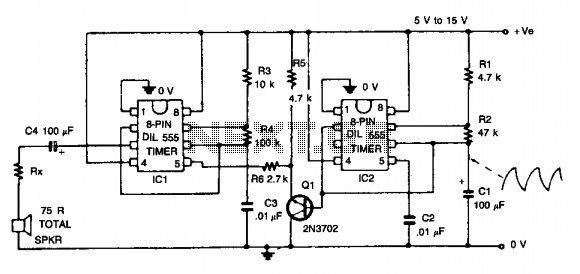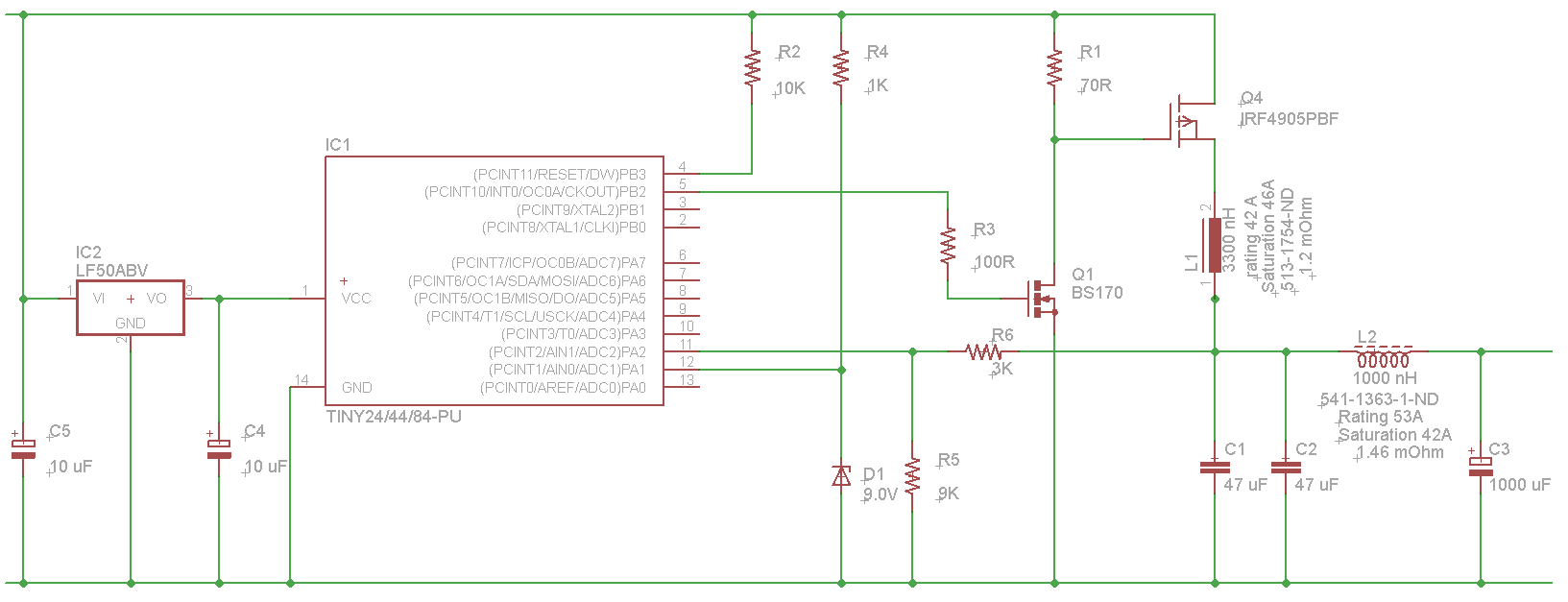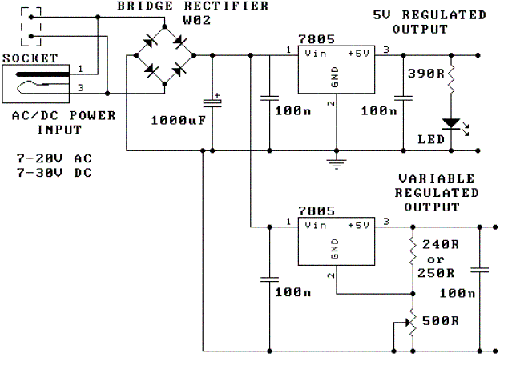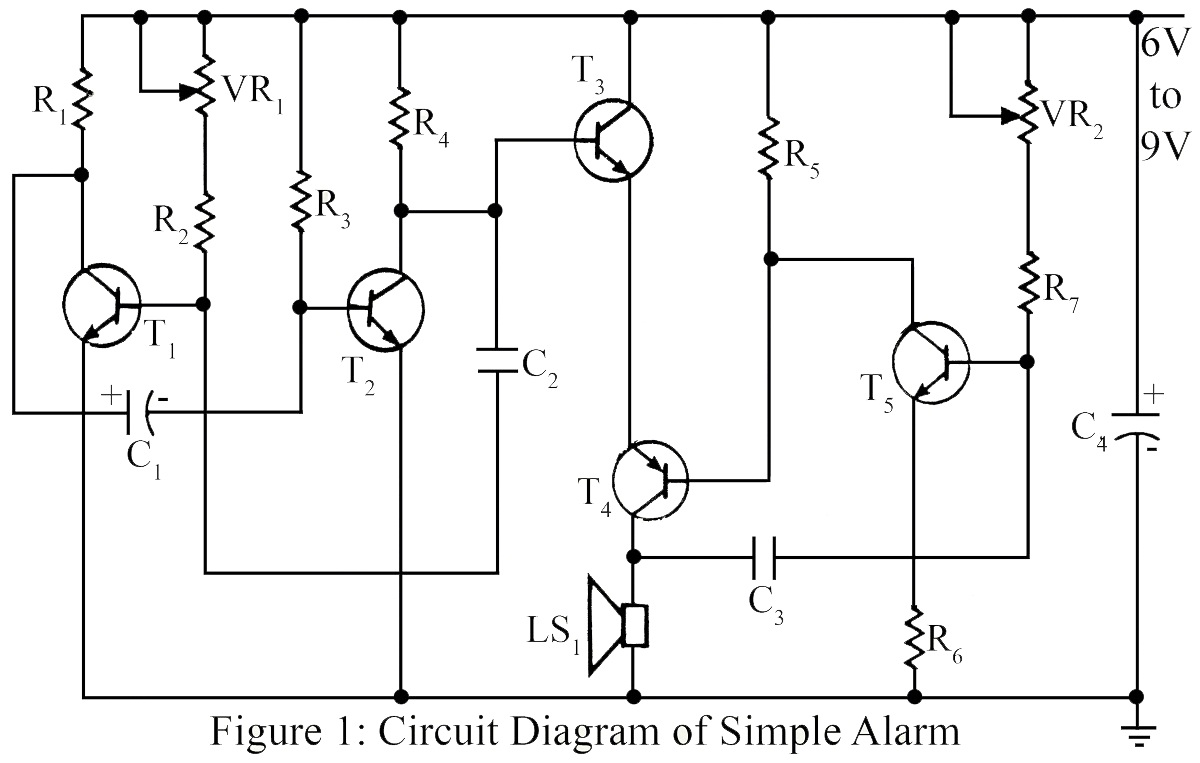
An SCR Based Burglar Alarm

This is a simple SCR-based burglar alarm circuit. Its features include automatic exit and entry delays, along with a timed bell cut-off and reset. It is designed to be used with standard types of normally-closed input devices such as magnetic reed contacts, micro switches, foil tape, and passive infrared sensors (PIRs). The basic alarm has a single zone with exit and entry delays, which is adequate for many situations. However, larger buildings are better divided into zones. The modular design allows for the addition of any number of zones to the system. These "instant" zones may be triggered by normally-open as well as normally-closed input devices. The system is user-friendly; when the alarm is activated, there is a grace period of about 30 seconds to exit the building. Upon returning and opening the door, a buzzer will sound, providing another 30 seconds to deactivate the alarm. If not deactivated, the siren will sound, and after approximately 10 minutes, the alarm will attempt to reset itself. If the trigger circuit has been restored, the reset will be successful; otherwise, if the loop remains open, the alarm will reactivate. The siren can be turned off at any time by deactivating the alarm. A conventional bell consumes up to about 400 mA, while an electronic siren typically uses less. If higher current draw is intended from either the buzzer or siren terminals, the SCR must be mounted on a metal heatsink, and the relay contacts may require upgrading. Due to manufacturing tolerances, the precise length of any delay depends on the characteristics of the components used in the circuit. However, by adjusting the values of resistors R2, R7, and R11, the exit, entry, and reset times can be tailored to meet specific requirements; increasing the values will extend the time, while decreasing them will shorten it.
The SCR-based burglar alarm circuit operates on the principle of using silicon-controlled rectifiers (SCRs) to manage the flow of current in response to input from various sensors. The circuit typically includes a power supply, SCR, resistors, capacitors, and input devices. The power supply provides the necessary voltage and current to the circuit, while the SCR acts as a switch that can be turned on or off based on the input from the sensors.
When the system is armed, the entry and exit delays are managed by timing circuits that use RC (resistor-capacitor) networks. The values of resistors R2, R7, and R11 influence the timing intervals, allowing customization based on user needs. The input devices, such as magnetic reed switches or PIR sensors, are connected to the circuit in a normally-closed configuration, ensuring that the circuit remains closed until a breach is detected.
If a breach occurs, the SCR is triggered, allowing current to flow to the alarm output, which can be either a buzzer or a siren. The circuit is designed to provide an initial buzzer sound to alert the user of the breach, followed by a siren activation if the alarm is not deactivated within the specified time. The timed cut-off feature ensures that the alarm does not remain active indefinitely, reducing the risk of nuisance alarms.
The modular design of the alarm system allows for expansion by adding more zones, which can be configured to respond to different types of input devices. This flexibility is particularly beneficial for larger premises, where multiple entry points need monitoring. Each zone can be independently configured to have its own delay settings, enhancing the overall security of the system.
For optimal performance, it is essential to ensure that the components used in the circuit are of high quality and compatible with the intended load. The use of a heatsink for the SCR is crucial when higher currents are expected, as it helps dissipate heat and prevent damage to the device. Additionally, careful consideration should be given to the relay contacts, which may need upgrading to handle the increased load if a conventional bell or other high-current device is used.
Overall, this SCR-based burglar alarm circuit provides a reliable and customizable solution for security needs, with features designed to minimize false alarms while ensuring effective response to unauthorized access.This is a simple SCR based burglar alarm circuit. Its features include automatic Exit and Entry delays - together with a timed Bell cut-off and Reset. It`s designed to be used with the usual types of normally-closed input devices such as - magnetic-reed contacts - micro switches - foil tape - and PIRs. The basic alarm has a single zone with "Exit/ Entry" delays. This will be adequate in many situations. However - larger buildings are better divided into zones. The modular design means that you can Add Any Number Of Zones to the system. These "Instant" zones may be triggered by normally-open as well as normally-closed input devices. It`s easy to use. When you switch on the alarm - you have about 30 seconds to leave the building. When you return and open the door - the Buzzer will sound. You have about 30 seconds to switch off the alarm. If you fail to do so - the Siren will sound. After about 10 minutes - the alarm will attempt to reset itself. If the trigger circuit has been restored - the attempt will be successful. But - if the loop is still open - the attempt will fail - and the alarm will re-activate. Of course - you can turn the Siren off at any time by switching off the alarm. A conventional bell uses up to about 400ma. An electronic siren generally uses less. If you intend to draw a heavier current from either the Buzzer or Siren terminals - the SCR in question will need to be bolted to a metal heatsink - and the relay contacts may need upgrading. Because of manufacturing tolerances - the precise length of any delay depends on the characteristics of the actual components you`ve used in your circuit.
But - to some degree - by altering the values of R2, R7 & R11 you can adjust the Exit, Entry and Reset times to suit your requirements. Increasing the values increases the time - and vice-versa. 🔗 External reference
The SCR-based burglar alarm circuit operates on the principle of using silicon-controlled rectifiers (SCRs) to manage the flow of current in response to input from various sensors. The circuit typically includes a power supply, SCR, resistors, capacitors, and input devices. The power supply provides the necessary voltage and current to the circuit, while the SCR acts as a switch that can be turned on or off based on the input from the sensors.
When the system is armed, the entry and exit delays are managed by timing circuits that use RC (resistor-capacitor) networks. The values of resistors R2, R7, and R11 influence the timing intervals, allowing customization based on user needs. The input devices, such as magnetic reed switches or PIR sensors, are connected to the circuit in a normally-closed configuration, ensuring that the circuit remains closed until a breach is detected.
If a breach occurs, the SCR is triggered, allowing current to flow to the alarm output, which can be either a buzzer or a siren. The circuit is designed to provide an initial buzzer sound to alert the user of the breach, followed by a siren activation if the alarm is not deactivated within the specified time. The timed cut-off feature ensures that the alarm does not remain active indefinitely, reducing the risk of nuisance alarms.
The modular design of the alarm system allows for expansion by adding more zones, which can be configured to respond to different types of input devices. This flexibility is particularly beneficial for larger premises, where multiple entry points need monitoring. Each zone can be independently configured to have its own delay settings, enhancing the overall security of the system.
For optimal performance, it is essential to ensure that the components used in the circuit are of high quality and compatible with the intended load. The use of a heatsink for the SCR is crucial when higher currents are expected, as it helps dissipate heat and prevent damage to the device. Additionally, careful consideration should be given to the relay contacts, which may need upgrading to handle the increased load if a conventional bell or other high-current device is used.
Overall, this SCR-based burglar alarm circuit provides a reliable and customizable solution for security needs, with features designed to minimize false alarms while ensuring effective response to unauthorized access.This is a simple SCR based burglar alarm circuit. Its features include automatic Exit and Entry delays - together with a timed Bell cut-off and Reset. It`s designed to be used with the usual types of normally-closed input devices such as - magnetic-reed contacts - micro switches - foil tape - and PIRs. The basic alarm has a single zone with "Exit/ Entry" delays. This will be adequate in many situations. However - larger buildings are better divided into zones. The modular design means that you can Add Any Number Of Zones to the system. These "Instant" zones may be triggered by normally-open as well as normally-closed input devices. It`s easy to use. When you switch on the alarm - you have about 30 seconds to leave the building. When you return and open the door - the Buzzer will sound. You have about 30 seconds to switch off the alarm. If you fail to do so - the Siren will sound. After about 10 minutes - the alarm will attempt to reset itself. If the trigger circuit has been restored - the attempt will be successful. But - if the loop is still open - the attempt will fail - and the alarm will re-activate. Of course - you can turn the Siren off at any time by switching off the alarm. A conventional bell uses up to about 400ma. An electronic siren generally uses less. If you intend to draw a heavier current from either the Buzzer or Siren terminals - the SCR in question will need to be bolted to a metal heatsink - and the relay contacts may need upgrading. Because of manufacturing tolerances - the precise length of any delay depends on the characteristics of the actual components you`ve used in your circuit.
But - to some degree - by altering the values of R2, R7 & R11 you can adjust the Exit, Entry and Reset times to suit your requirements. Increasing the values increases the time - and vice-versa. 🔗 External reference





